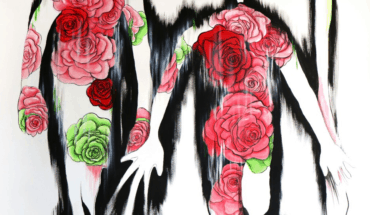New research explains how we decide who to trust – is this why we’re so compelled by ‘The Traitors?’
• Humans make judgements about whether to trust a person by combining their features with those around them and make a judgement based on it
• This happens in a fraction of a second and can have serious implications for criminal justice and leadership selection.
• But – can this also explain why contestants on popular TV show, ‘The Traitors’ cannot seem to identify who they should and shouldn’t trust?
Hit TV show ‘The Traitors’ has captured the attention of around 6 million viewers in the UK and is due to reach its conclusion on Friday, January 26.
Following the premise of Dutch series ‘De Verraders’, the BBC show follows a group of contestants in which a contingent become ‘Traitors’, and the remaining ‘Faithful’ must work together to eliminate them and collect the prize money. So far, the Traitors are proving elusive with the Faithful struggling to identify who should and shouldn’t be trusted.
New research from the School of Psychology at the University of Aberdeen, may explain why judgements of trustworthiness of groups are often flawed.
The study, published in the journal Cognition, found that when encountering a group of people, individuals judge their trustworthiness by combining their facial features together into one ‘composite face’ and making one judgement based on this combination of faces – all of which happens within a fraction of a second.
Contrary to what was previously thought – that we judge each person individually – this amalgamation of facial features, the researchers say, can have implications for how we perceive people in groups such as in eye-witness identification line-ups and may even be applied to understanding or influencing our judgements of the trustworthiness of members of a political party.
The study formed part of University of Aberdeen postgraduate student, Fiammetta Marini’s research. She said: “We know that we subconsciously judge whether an individual is trustworthy based on facial characteristics. For example, high eyebrows that seem surprised-looking in their shape, along with a U-shaped mouth, are usually perceived as trustworthy. On the other hand, eyes close together or lower eyebrows, are often perceived as untrustworthy.”
Ms Marini continues: “It is important to note however, that these judgements are neither accurate nor reliable.
“The link between facial features and actual trustworthiness is far from perfect, and trustworthiness impressions are insufficiently accurate to serve as reliable foundations for real-world decision-making.
“Regardless – we make these split-second judgements and they have a big impact in our everyday lives, even if these impressions are not always accurate, they invariably shape our social behaviour.”
The team took what is known about individuals and investigated how this judgement is made when faced with groups of people.
Ms Marini and her colleagues found that rather than meticulously examining each single individual face, the visual system blends the trustworthiness impressions of the entire group of faces into an average representation that gives us an immediate gist.
This process is termed “ensemble perception” and is thought to be particularly useful given that it allows people to quickly extract perceived social information. The research found that this judgment is made in around a quarter of a second.
Ms Marini who conducted the research under the supervision of Dr Mauro Manassi and Dr Clare Sutherland explains: “Traditionally, research has focused on trustworthiness impressions at the individual face level by exploring how we form trust judgments of single individuals. Obviously in everyday life, we often encounter groups of people rather than only isolated individuals so it is essential to understand how we form impressions of groups.”
“Fundamentally – what is important is that trustworthiness impressions of a group can potentially influence our behaviour towards that group.
“But it is important to remember that we are only talking about facial features. Maybe what it really shows is that we should focus on what people do as opposed to judgements about whether we like the look of them!
“This can explain why people may say things like ‘there’s just something about them I don’t trust’ or ‘I don’t trust any of them!’ and yes – it may explain why the Traitors are proving so elusive!’
- Gut microbiome could delay onset of type 1 diabetes - 3rd April 2025
- The da Vinci 5 Robot Is Set To Transform Bariatric Care: - 31st March 2025
- Beyond money: the hidden drivers fuelling child food insecurity - 31st March 2025






